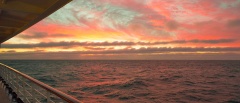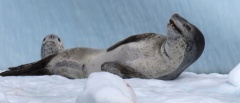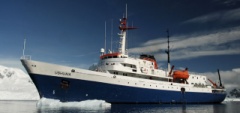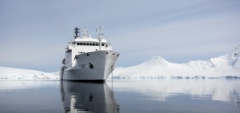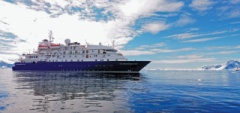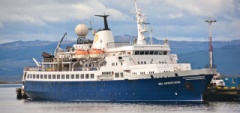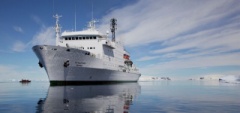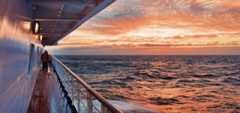South Orkney Islands
Mountainous and covered in glaciers, the South Orkney Islands are home to nesting penguins and feeding seals...
The South Orkney Islands are another group of islands in the Southern Ocean, east of the South Shetland Islands. They are 375 miles northeast of the tip of the Antarctic Peninsula, meaning they are usually visited on route to or from the Antarctic mainland. A huge sub-marine mountain range connects the South Orkney Islands to the Antarctic Peninsula. Surrounded by great icebergs and sea ice, the islands are visited less often as they are often shrouded in mist and can be difficult to land on.
More than 85% glaciated, they consist of four major islands, including Coronation, Signy, Powell and Laurie. Coronation Island being the largest of the four and the most popular landing point, offers the chance to observe penguins nesting in moss beds, along with downy snow petrels at Shingle Cove. Boats may also try to stop at Signy Island, home to a British meteorological island and Laurie Island, the site of Argentina’s meteorological station and incidentally, the oldest continuously run research centre in Antarctica.
The islands were jointly discovered by American and British sealers in 1821. The British sealer, George Powell originally named the islands Powell’s Group, claiming possession of the islands for the British Crown. It was two years later in 1823 that the Scottish sealer James Weddell visited the islands and gave them their current name of the South Orkney Islands. It is suggested that Weddell named these islands after the Scottish Orkney Islands as they are positioned at the same latitude in the south as the Orkney Islands are in the North.
The sealing and whaling industries devastated the islands populations of sea mammals but seal populations have bounced back in recent decades and today the South Orkney Islands are a popular site for feeding seals and nesting chinstrap, Adélie and gentoo penguins.

